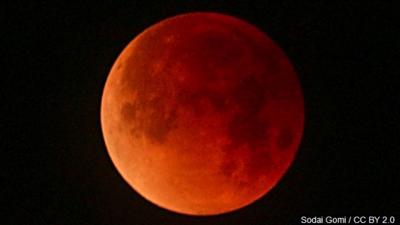A lengthy, total lunar eclipse will grace the night sky on Sunday, May 15, beginning at 6:29 p.m. PDT and reaching totality by 9:11 p.m.
For exact times based on your location, visit this eclipse map!
Another total lunar eclipse will happen in November, visible to those in Africa and Europe, but North and South Americans will be out of luck for that event. The next lengthy total eclipse won't be seen in these parts until 2025.
Luckily, this one will be one of the longest seen this decade, reflecting the vibrant red and orange hues of a sunset for around an hour and a half before totality.
Noah Petro, a planetary geologist with NASA, says all you'll need are "patience and eyeballs."
“This is this gradual, slow, wonderful event that as long as it’s clear where you are, you get to see it,” Petro said.
The weather in the area may cause some difficulties for those eager to view the celestial spectacle, but no worries! NASA will be livestreaming the event on YouTube, which you can tune into here!
If you manage to snap a picture of the eclipse, you can send in your photos on our website HERE!
Wondering how the eclipse ended up with such a cool title?
A supermoon occurs when the moon's orbit is closest to the Earth at the same time it is full.
A blood moon occurs when the moon is in total lunar eclipse, casting a reddish hue.
A flower moon is any full moon that occurs in the month of May. Other names for a May moon include hare, corn planting, and the milk moon.
And that's how we ended up with a Super Flower Blood Moon eclipse.






























Commented
Sorry, there are no recent results for popular commented articles.